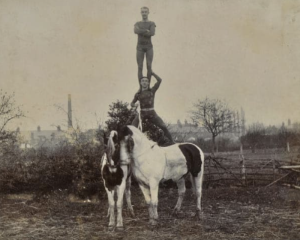Do you need help with Italy genealogy research? Or, even more intriguing, did you ever daydream about running away to join the circus? It’s the greatest show on Earth, right?! Eight-year-old me was sure circus life had to be exciting, daring, adventurous, and non-stop fun. Even now, the circus has a mystique that captures my imagination. When we discovered one of my client’s family lines had ties to the circus, I was thrilled to be a part of the discoveries. Birth, marriage, death records, and … [Read more...]
Digging for Deaths Part 2: Census Mortality Schedules
As discussed in the first installment of this series, Census mortality schedules can be used without official vital records to document the deaths of individuals who passed within a year of the official census date. However, a deeper understanding of the structure of each year’s schedule and an eye for detail may lead to additional discoveries. Asking the Important Questions: Differences Between Census Years The numbers and types of questions asked differed across census years. For example, in … [Read more...]
Digging for Deaths: Understanding the Census Mortality Schedule
This is the first article in a series meant to introduce mortality schedules and the information contained within them. The follow-up article will include examples of interesting tidbits and intriguing stories that these records have helped to uncover. Across most of the United States, consistent, statewide registration of vital events, such as births, deaths, and marriages, did not begin until the twentieth century. For genealogists, this creates a gap that is sometimes difficult to … [Read more...]
Researching Enslaved Ancestors in the former British Empire
Researching enslaved ancestors in the former British Empire is not as hopeless as it may initially seem. With well kept records and archives now available online, researching enslaved ancestors is possible. Here we share some strategies to aid in your research. The Centre for the Study of the Legacies of British Slavery has created a wonderful beginning point for researching your enslaved ancestors. Their database has indexed many records, including a majority of the registers and … [Read more...]
Looking Back: The 1950 U.S. Federal Census is Coming Soon!
Legacy Tree Genealogists' Sarah Gutmann talks about the soon-to-be-released 1950 United States Federal Census and how it can be used to further genealogical research. She also explains when and how the database will be available online and searchable. Put on your poodle skirt and throw on an episode of I Love Lucy because we will soon be able to look back at the 1950s! On 1 April 2022, the National Archives will release the 1950 Census to the public. As is standard practice, precisely 72 … [Read more...]
A Guide to Pre-1850 US Federal Censuses
This guide will discuss what kinds of information you can expect to find in pre-1850 US Federal Censuses and how to use those documents in your own research. US Federal Censuses are critical to genealogical research in the United States. The later censuses—those after 1850 and especially those after 1880—offered more genealogical information than earlier ones and are frequently used by hobbyists and professional genealogists alike. Censuses before 1850 are more difficult to use because they … [Read more...]
Top 3 Resources to Trace Your Ancestry in Guatemala
Legacy Tree Genealogists works with researchers from across the globe to access records for our clients. We asked one of our onsite researchers located in Guatemala to share an overview of the top 3 resources for tracing your Guatemalan ancestry. A journey through Guatemala history is essential to understand the nature of Guatemala genealogy records. Guatemala, like the rest of the Central America countries, was colonized by the Spaniards, who arrived in 1524 and conquered the native … [Read more...]
Details in the Graves: Using Tombstone Symbolism to Unlock your Ancestor’s History
"What does the symbol on my ancestors' gravestone mean?" Our guide to gravestone symbols may just contain the answer you're looking for! This time of year, cemeteries hold a certain appeal due to their association with the macabre, but for the dutiful family historian, the tombstones of our ancestors can provide leads to untapped records. If you have yet to go and search for the physical gravestone of an ancestor and know where they might be buried, the effort spent locating them could be … [Read more...]








